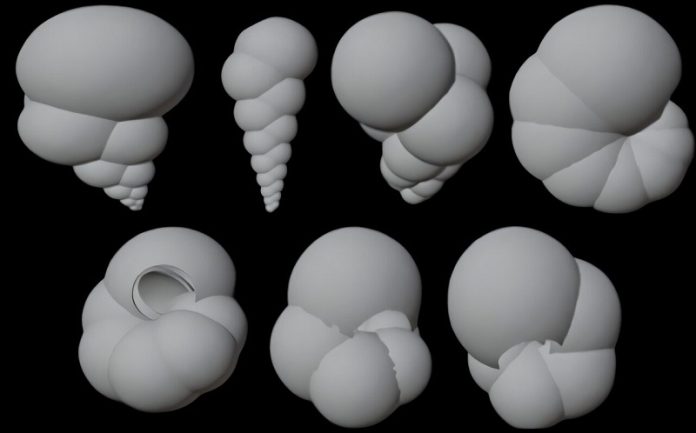
A team of engineers and paleontologists has developed a new method that could help robots identify and sort complex objects—starting with some of the tiniest fossils on Earth.
Their approach uses math and 3D modeling to teach robots how to recognize microscopic marine fossils called foraminifera, or “forams,” which are no larger than a grain of sand.
Forams are not animals or plants, but ocean-dwelling single-celled organisms that have existed for over 100 million years.
When they die, they leave behind tiny, hard shells that can survive for millions of years.
These shells hold important clues about what Earth’s oceans were like in the past—including their temperature and chemical makeup—making them valuable tools for climate researchers.
But sorting through thousands of these tiny, look-alike fossils is a slow, difficult task, even for trained scientists.
To speed up the process, researchers at North Carolina State University developed a robot called Forabot that can sort and identify different species of forams. However, fine-tuning the robot’s parts to handle such tiny and varied shapes proved to be extremely time-consuming.
That’s where the new technique comes in. Instead of repeatedly adjusting physical hardware in the lab, the research team created photorealistic 3D images of the forams using a mathematical model.
These virtual fossils are detailed and accurate enough to simulate how the robot would interact with real ones.
This allows scientists to make changes in a virtual environment first, then apply the best design to the real-world system, saving both time and effort.
By simulating how Forabot operates using these 3D models, the team was able to improve its fossil identification accuracy from 82% to 89%. The 3D images helped researchers test different camera angles and lighting setups to find the best conditions for recognizing the shells, which in turn guided the design of a more advanced robotic system focused on 3D reconstruction.
Sanjana Banerjee, a Ph.D. student and the study’s lead author, explained that these simulations also helped artificial intelligence (AI) models learn how to rebuild 3D shapes from just a few 2D pictures. This is an important step toward fully automating the process of identifying and classifying forams.
But the potential of this research extends far beyond fossils. According to professor Edgar Lobaton, a co-author of the study, the same approach could be used to train robotic systems to sort complex shapes in other areas too—like isolating microbes for medical use or sorting fruit and vegetables in agriculture.
The team has made the tools and code they developed available online so that other scientists can use or build on their work. This means more researchers can take advantage of the 3D modeling and simulation techniques to improve robotic systems in many different fields.
The research was published in the journal Marine Micropaleontology and involved experts from NC State and the University of Colorado Boulder.
With this new technology, tiny fossils from ancient oceans may soon help modern machines become smarter and more efficient.
Source: North Carolina State University.



